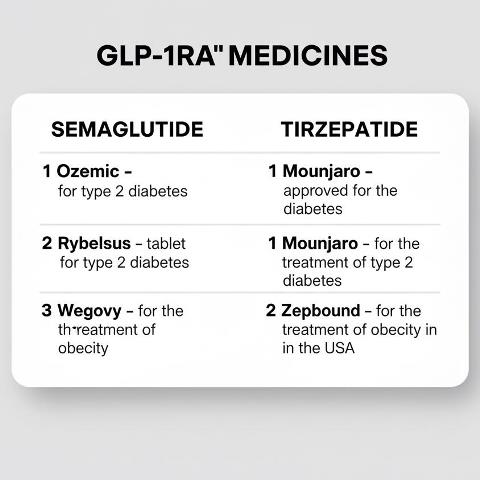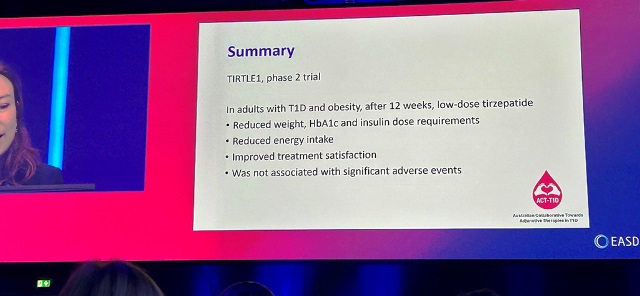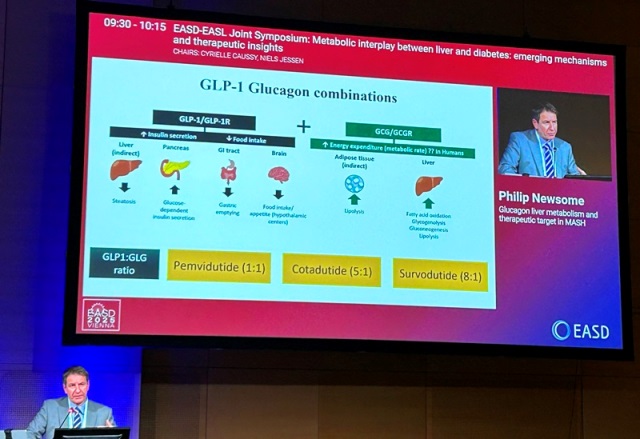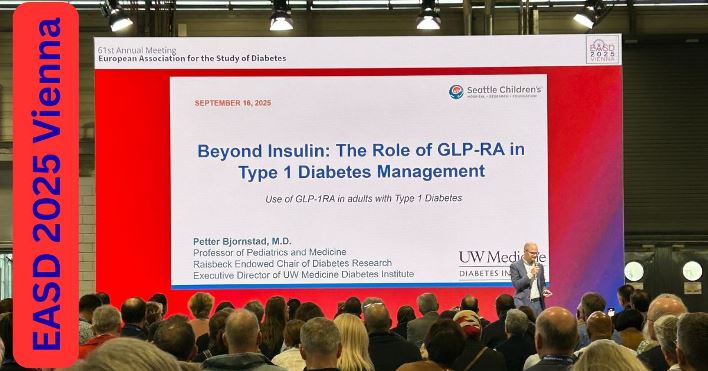The 61st Annual Congress of the European Association for the Study of Diabetes has just concluded in Vienna – the largest European congress dedicated to diabetes. A wide range of research was presented, but the dominant themes were innovations and a holistic approach to the treatment of type 1 and type 2 diabetes, as well as obesity.
As an endocrinologist, I was particularly intrigued by presentations on the use of GLP-1RA medications (Ozempic, Mounjaro…) in adults living with type 1 diabetes.

Today for type 2, tomorrow for type 1?
GLP-1RA drugs are already well established in the treatment of type 2 diabetes and obesity, and are now being seriously investigated for type 1 diabetes for the first time.
This is logical given the increasing problem of weight gain in these individuals, which brings with it elevated cardiovascular risk. It is already well known that these drugs have positive effects in patients with cardiovascular and kidney disease, so it is no surprise that there is strong interest in their potential use for people with T1D and excess body weight.
However, as a physician I always remain cautious when introducing new drugs due to possible adverse events and side effects – in this case the risks of hypoglycemia (from reduced appetite, weight loss, and insulin dose adjustments) and ketoacidosis.

Results show that low doses of tirzepatide in adults with type 1 diabetes and obesity can significantly reduce body weight and total insulin dose compared to placebo. The effect on glycemia was more modest.
In the ADJUST-T1D study, semaglutide also showed partial improvements in glycemic control and promoted weight loss compared to placebo.
Researchers emphasized that these outcomes open the door to new treatment approaches in the future, especially when combined with the possibilities offered by new continuous glucose monitoring technologies.
Nevertheless, despite the encouraging data, experts repeatedly highlighted the need for caution. These are small, short-term studies with limited numbers of participants, so it is too early to talk about broad application. Additional research on the risk of hypoglycemia and ketoacidosis is particularly needed, since combining reduced insulin doses with additional therapy requires very careful monitoring. Still, GLP-1RA provides a new sense of hope in type 1 diabetes treatment.
The main satisfaction so far comes from the reduction in body weight and insulin requirements. We await larger studies before major changes in treatment guidelines can occur – so, “cautious optimism.”

Ozempic, Rybelsus, Wegovy and dialysis?
As an endocrinologist at the University Hospital Centre Zagreb, I was particularly interested in results from studies of these drugs in patients with type 2 diabetes on dialysis.
They showed reduced mortality and fewer cardiovascular events in these patients compared to placebo. It is also excellent that for some of them, continuing therapy after the initiation of dialysis has already been proven safe.
I was not the only one interested in this area – the large number of endocrinologists in the hall and the lively discussion at the end proved that.
More new drugs
- Orforglipron – an oral GLP-1 agonist being developed by Eli Lilly.
- Cagrilintide – an amylin analogue developed by Novo Nordisk.
Among the new medications, oral GLP-1RA tablets such as orforglipron stood out, with an average body weight loss of about 11% at maximum doses – something that could be appealing to patients who prefer tablets over injections.
Artificial intelligence in practice
Beyond pharmacological developments, the EASD also showcased research confirming the benefits of physical activity in maintaining cardiovascular improvements after weight loss. There is a growing role for digital support and artificial intelligence in practice, as well as the importance of treating comorbidities such as fatty liver with both “old” (GLP-1RA) and “new” medications (e.g., combinations of GLP-1RA with glucagon agonists, or resmetirom).

Conclusion
I would sum up my impressions of the EASD like this: many innovations and a shift towards holistic diabetes care. 😊
Author: Dr. Mirsala Solak







